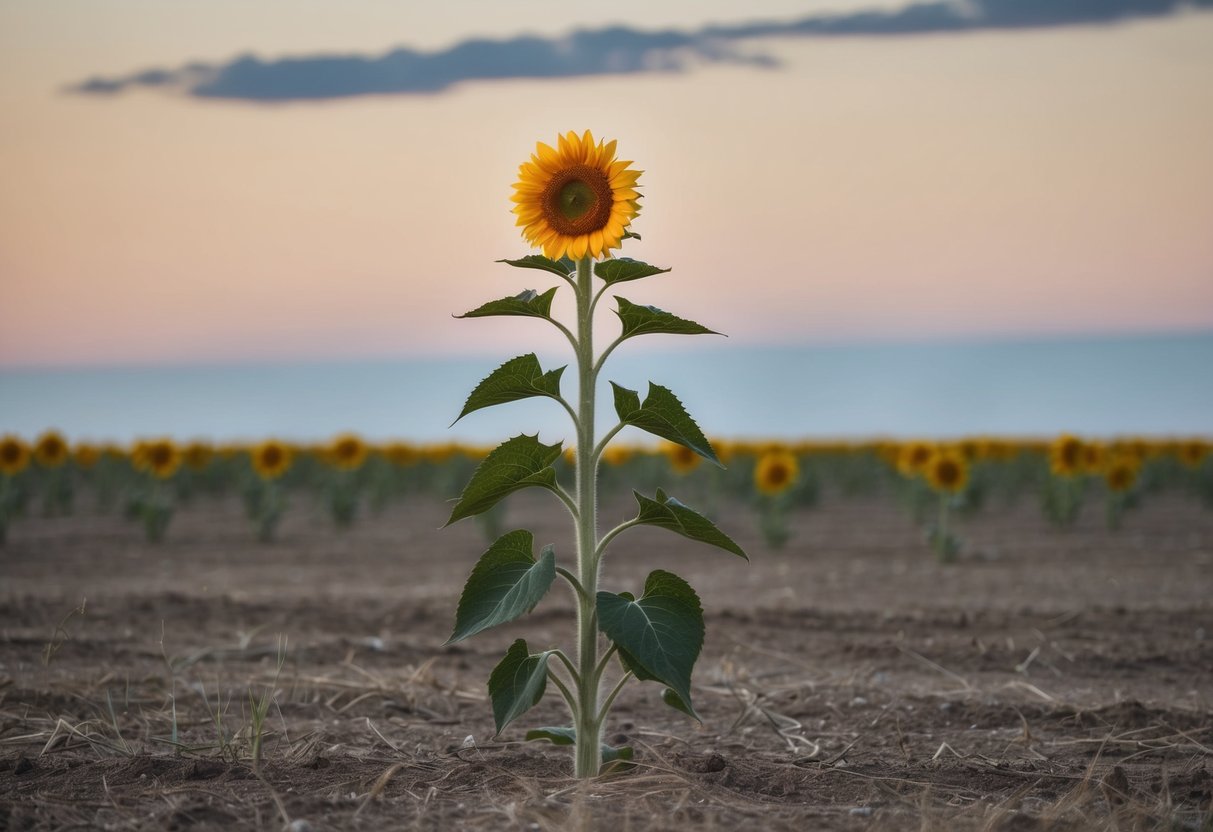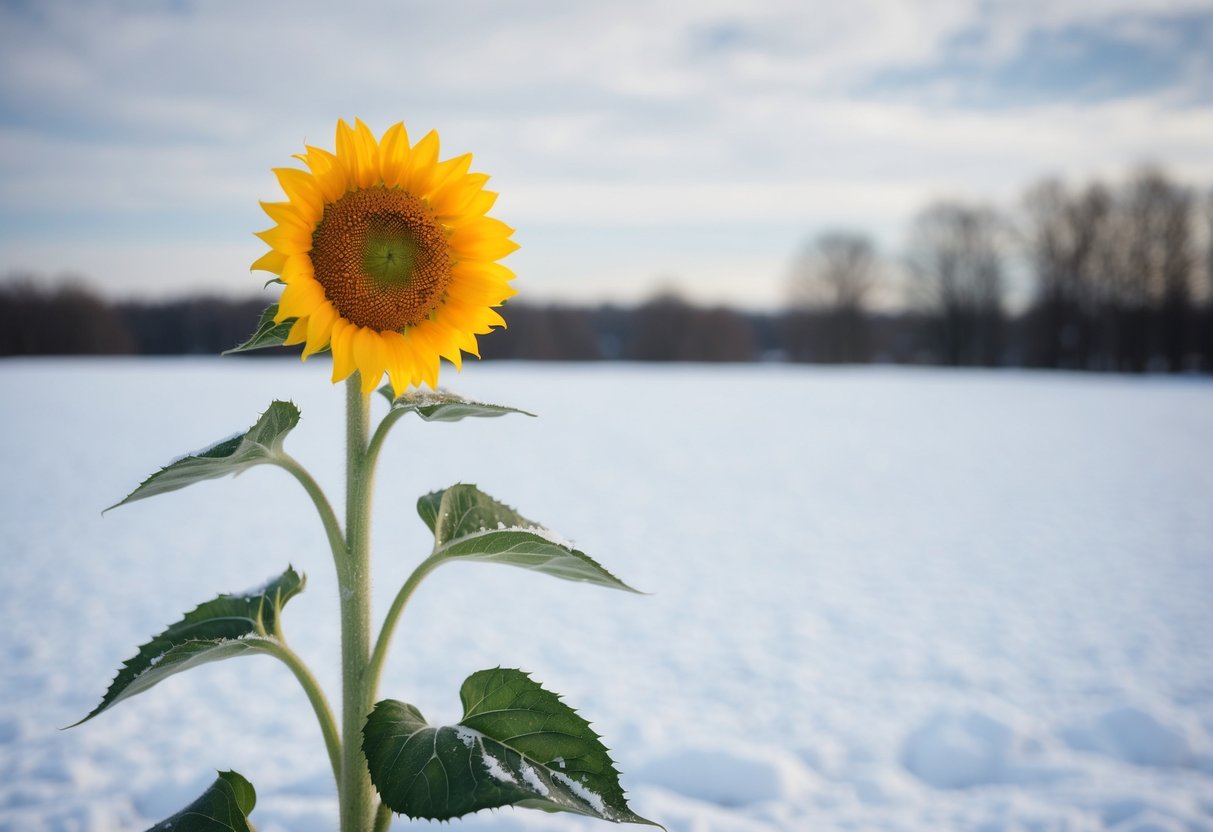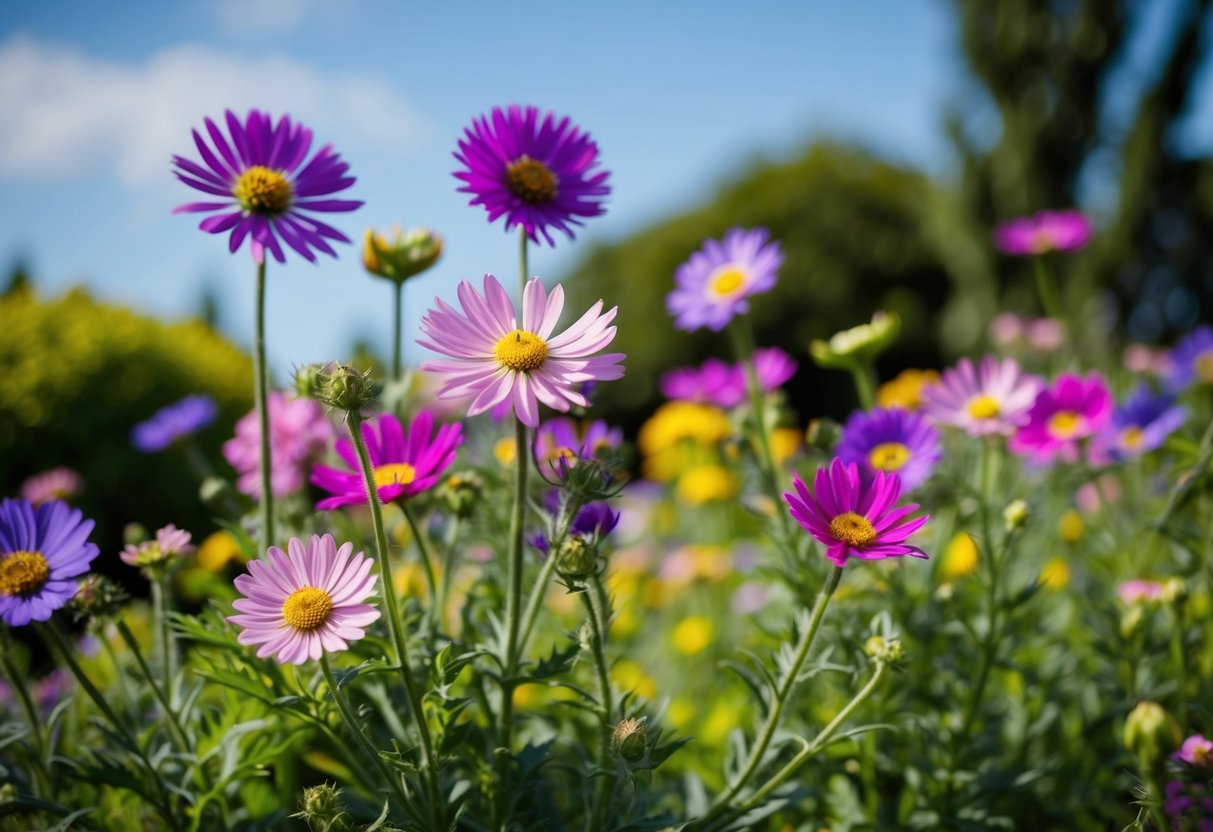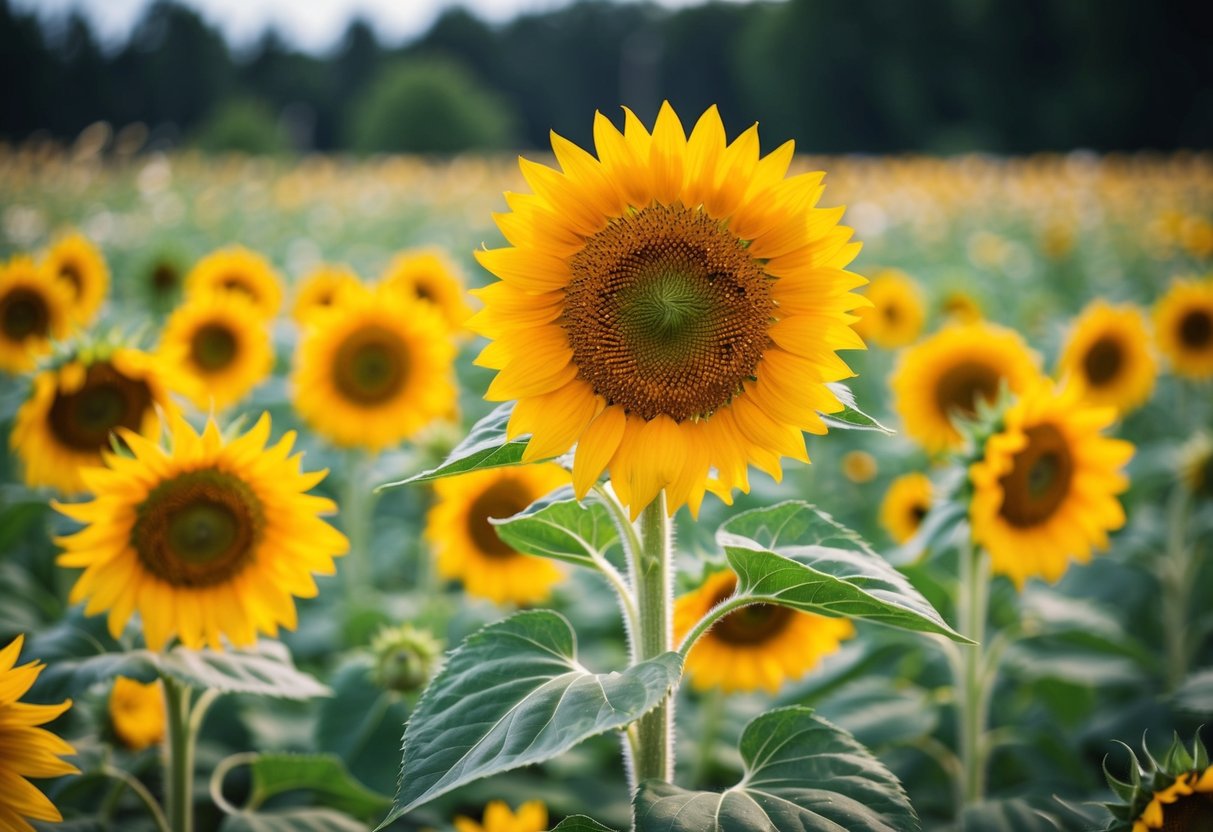What is the Hardiest Flower? Discover the Toughest Blooms
When you’re looking for flowers that can withstand harsh climates and still thrive effortlessly, knowing which are the hardiest can be a game-changer for your garden. Among the many options, Russian sage stands out as one of the hardiest flowers you can plant. It’s not just its ability to bloom in hot, dry conditions that makes it remarkable, but also how it retains its vibrant bluish-purple color for weeks.

As you explore the world of hardy blooms, you’ll find that these flowers bring not just resilience but beauty to your garden. Flowers like coneflowers and black-eyed Susans are well-loved for their toughness and charm. Coneflowers and black-eyed Susans return year after year, withstanding cold winters and minimal care, adding a splash of color that brightens up any landscape.
Whether you’re a seasoned gardener or just starting, choosing the right flower can make your gardening experience more enjoyable. The beauty of hardy perennials is that they are low-maintenance yet reward you with year-round interest. Dive into this blog post to uncover more about these enduring blooms and how they can transform your garden effortlessly.
Understanding Plant Hardiness

Plant hardiness involves how well a plant can tolerate specific climate conditions. Two main factors that determine hardiness are hardiness zones and the root system. Understanding these concepts can help you select the right plants for your garden.
Hardiness Zones and Climate Adaptation
Hardiness zones are a helpful way to understand which plants can grow in your area. The United States Department of Agriculture (USDA) map divides the country into zones based on average annual minimum temperatures. Each zone represents a 10-degree Fahrenheit range. Some zones are further split into “a” and “b” for more precise temperature ranges.
Choosing plants suited to your zone can impact their growth. For example, a plant well-suited for Zone 4, where temperatures can drop to 20 degrees Fahrenheit or lower, may not thrive in a warmer zone. Learning about your local zone can guide you in picking resilient flowers. You can use the plant hardiness zone map to find your zone easily.
Root System and Plant Resilience
The root system plays a crucial role in a plant’s ability to survive in harsh conditions. A strong root system can help a plant absorb necessary water and nutrients. Deep roots allow plants to endure drought conditions better than those with shallow roots.
Plants with fibrous or taproot systems are often more resilient. Taproots grow deep into the soil, anchoring the plant securely and accessing moisture far below the surface. Fibrous root systems spread out widely, which can help stabilize the plant and take in more nutrients from the soil.
When choosing hardy flowers, consider those with robust root systems. This characteristic can be as important as selecting based on hardiness zones and climate. Understanding these factors ensures you pick flowers that will flourish in your garden.
Criteria for Hardy Flowers

When choosing hardy flowers for your garden, consider their ability to withstand dry conditions and how much sunlight they require. Both of these factors will help you select plants that thrive in your environment with minimal care.
Drought Tolerance in Flowers
Drought tolerance is key when selecting hardy flowers. These plants can survive with little water, making them ideal for gardens in dry areas. You’ll want to look for flowers that have adapted to store and conserve water.
Many drought-tolerant flowers have thick, waxy leaves that reduce water loss. Succulents are a great example, but there are also many perennial flowers that fit the bill. For instance, black-eyed Susans are known for their ability to thrive with minimal care and water.
Ensure that your drought-tolerant flowers are planted in well-drained soil. This prevents root rot and further promotes their hardiness. By choosing drought-tolerant flowers, you can enjoy a vibrant garden even in dry conditions.
Sunlight Requirements and Shade Tolerance
Understanding sunlight requirements is crucial for growing hardy flowers. Some flowers thrive in full sun, requiring six to eight hours of direct sunlight each day. Others prefer partial shade, which can be a lifesaver in hotter climates.
For flowers that love full sun, like dahlias, ensure they get plenty of light daily to bloom fully. On the other hand, some hardy flowers like hostas can tolerate partial shade and still look lush. Knowing what light conditions your garden provides will help you pick the right plants.
Balancing these sunlight needs with drought tolerance gives you a resilient garden that manages sunlight and water efficiently.
Popular Hardy Perennials

These hardy perennials bring vibrant colors and textures to any garden, making them a reliable choice for gardeners. You’ll find both flowering and foliage-focused options that thrive across various climates and soil conditions.
Blossoming Perennials for Garden Vibrancy
Flowers like coneflowers and daylilies are top picks for adding bright colors to your garden. Coneflowers are not only beautiful but also attract butterflies and pollinators, making your garden lively. They’re known for their ability to withstand tough climates, especially in zones 3 to 10.
The daylily is another favorite. It doesn’t just boast beautiful blooms; it’s also a resilient plant that can thrive in various conditions. It can handle full sun and wants well-drained soil. Daylilies range in many colors, providing options to match your design taste.
Other popular flowering choices include salvia, yarrow, and peonies. Each offers unique color palettes and bloom shapes. Peonies, for instance, are known for their large, fragrant blooms. These garden workhorses usually bloom even when conditions are less than perfect.
Foliage-Focused Perennials for Year-Round Interest
For year-round appeal, foliage-focused perennials like hosta and sedum should be on your list. Hostas are lauded for their lush, green leaves that tolerate shade gardens beautifully. Their varied leaf textures add interest to any garden bed.
Russian sage, with its airy growth and silvery leaves, brings elegance without demanding much care. This perennial thrives in sunny areas and dry soil and adds a splash of blue-purple during its bloom period.
Chrysanthemums and dianthus not only provide color when they flower but also maintain appealing foliage. Chrysanthemums can extend the beauty of your garden into fall with their late bloom period. By choosing these plants, you’ll enjoy a garden that shines even when flowers aren’t in full bloom.
Incorporating Hardy Flowers in Your Garden

Hardy flowers add lasting beauty to your garden while requiring less care. You can create a colorful garden that thrives even in challenging conditions by choosing the right plants.
Creating a Low-Maintenance Garden
To enjoy a garden without spending too much time caring for it, start with hardy perennials. Flowers such as Shasta daisies and butterfly weed are great choices because they thrive with minimal care. These plants are perfect for filling garden spaces and require less frequent watering.
Place evergreens and other hardy plants strategically for effective ground cover. This reduces the need for constant weeding. An evergreen will create a lush backdrop throughout the year. Choose plants that suit the sun or shade conditions of your garden to ensure they thrive.
Designing with Hardy Flowers for Various Garden Types
You can tailor your garden design by incorporating hardy flowers that fit your space and style. For cottage gardens, consider planting clusters of vibrant perennial blooms like coneflowers. These plants add color and attract butterflies. In a shade garden, use plants like hostas and ferns. They can thrive with limited sunlight.
If you have a border garden, plant hardy perennials like globe flowers to create a layered look. Each plant brings its unique charm and shape, giving your garden depth. Arrange the blooms at different heights and textures for visual interest. This approach helps you make the most of any garden space while minimizing upkeep.
Caring for Your Hardy Flowers

Caring for hardy flowers involves seasonal maintenance to keep them healthy and thriving. Additionally, you’ll want to attract pollinators like bees and butterflies to help your garden flourish.
Seasonal Maintenance and Care Tips
In spring, cut back old growth from flowers like daisies and black-eyed susans to encourage new blooms. Use a balanced, slow-release fertilizer to give your flowers a nutrient boost. For plants like lavender and peonies, make sure the soil is well-draining to prevent root rot.
During the summer, water deeply once a week, especially for plants such as geraniums and asiatic lilies. Be mindful of watering needs, as catmint and barrenwort are more drought-tolerant. Mulching around your flowers can help retain moisture and suppress weeds.
In autumn, trim faded flowers from plants like shasta daisies and rudbeckia hirta to tidy up your garden. This also helps prevent disease. Prepare your perennials for winter by adding a layer of mulch or straw around the base to protect roots from freezing temperatures.
Attracting and Supporting Pollinators
Pollinators are crucial for the health of your garden. To draw them in, plant a variety of flowers that bloom at different times, like hollyhocks in summer and japanese anemones in fall. Iris and blazing star provide bright colors that attract bees and butterflies.
Create a welcoming environment by avoiding pesticides and providing water sources like birdbaths or shallow dishes. Liatris spicata and helenborre are excellent choices, as their nectar-rich blooms are particularly attractive to pollinators.
Consider planting clusters of the same flower type for easier pollination. Especially focus on adding columbine and cranesbill to offer early nectar in spring. Your garden will become a buzzing hub of activity, supporting both flowers and helpful insects alike.







